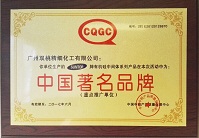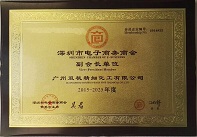
![]() E-mail: admin@gz-chemical.com
E-mail: admin@gz-chemical.com
Email us,best price and silane solutions for you!
Tel:+86 (20) 29035969

![]() E-mail: admin@gz-chemical.com
E-mail: admin@gz-chemical.com
Email us,best price and silane solutions for you!
Tel:+86 (20) 29035969


Bis - [3- (triethoxysilyl) - propyl] - tetrasulfide.
Synonym: Bis(triethoxysilylpropyl)tetrasulfide;
3,16-Dioxa-8,9,10,11-tetrathia-4,15-disilaoctadecane, 4,4,15,15-tetraethoxy;
3,3'-Bis(triethoxysilylpropyl)tetrasulfide
Chemical Structure

Introduction
Heretofore, carbon black has been used as a reinforcing filler for rubber because carbon black provides higher reinforcement and more excellent abrasion resistance than other fillers. Recently, because of social requirements to save energy and to save resources, particularly to cut down fuel consumption of automobiles, a decrease in the heat buildup of rubber compositions is also required.
For decreasing the heat buildup of rubber compositions by using carbon black, use of a small amount of carbon black or carbon black having a large particle size is considered. It is, however, well known that, in both methods, decreasing heat buildup is in a contradictory relation with improving reinforcement and abrasion resistance of a rubber composition.
On the other hand, silica is known as a filler which provides decreased heat buildup of a rubber composition. However, silica particles tend to cohere together due to hydrogen bonding of silanol groups which are functional groups on the surfaces of the silica particles. For improving the dispersion of silica particles into rubber, the mixing time must be increased. When dispersion of silica particles into rubber is insufficient, a problem arises in that processability in processes such as extrusion and the like deteriorates due to the increase in the Mooney viscosity.
Moreover, the surfaces of the silica particles are acidic. Therefore, there are problems in that basic substances used as vulcanization accelerators are absorbed such that vulcanization is not carried out sufficiently, and a sufficient modulus of elasticity is not obtained.
In order to solve these problems, we developed various types of silane coupling agents.
DP-S69 is a bifunctional polysulfidic organosilane for the rubber industry defined chemically as Bis(3-triethoxysilylpropyl)tetrasulfide. It is used to improve the reinforcing capability of fillers with silanol group on their surface (e.g., silicas, silicates, clay, etc.), and also as an integral part of curing systems to improve crosslinking network properties.
Typical Physical Properties
Chemical Name: | Bis - [3- (triethoxysilyl) - propyl] - tetrasulfide |
CAS No.: | 40372-72-3 |
EINECS No.: | 254-896-5 |
Empirical Formula: | C18H42O6S4Si2 |
Molecular Weight: | 539 |
Boiling Point: | Decomposition above 250°C [760mmHg] |
Flash Point: | Min.100 °C |
Pour Point: | App. -80°C |
Color and Appearance: | Yellowish clear liquid |
Density [25°C]: | 1.09 |
Volatiles components | Max 4.0% |
Average chain length | 3.75 0.15 |
Total Sulfur (standard value) | 22.7 0.8 % |
Soluble in | Primary alcohols, ketones, benzene, toluene, chlorinated hydtocarbons, acetonitrile, dimethylformaminde, dimethysulfoxide |
Insoluble in | Water |
Applications
DOSAGE
Suggested dosage per 100 parts of filler:
For silica-3~13 parts;
For clay and talc-0.5~1.0 parts;
When used in rubber compounds, it produces these effects:
Coupling agent for non-black pigments.
Cure equilibrium for reversion resistance.
Curing agent for good heat aging.
Coupling Agent - With as little as 0.5 to 1.0 phr with clay fillers and 1.0 to 4.0 phr for silica pigments, PC2000 couples the non-black pigment and elastomers resulting in increases in modulus and increase in abrasion resistance.
Cure Equilibrium - DP-S69 has four sulfur atoms positioned in the center. At cure temperatures, these participate with sulfur in producing polysulfidic crosslinks. The DP-S69 replaces crosslinks broken during cure, resulting in reversion resistant, and with proper compounding, reversion free compounds. This is known as equilibrium cure. The dynamic flex characteristics, E.G., heat generation and crack growth, are dramatically improved.
Curing Agent - Removing all sulfur from the compound for NR, SBR, NBR and replacing it with PC2000 and certain thiuram accelerators, produces compounds with excellent heat aging characteristics in addition to the coupling effects. DP-S69 is a silane coupling agent that has crosslinking and accelerator activity in rubber compounds.
Area of rubber industry where them would be beneficial
Footwear - Abrasion resistance | Cutting and chunking resistance | Flex life improvement
Rolls - Abrasion resistance | Aging resistance | Processing | Set reduction (better load bearing) | Reduced water swell | Lower hysteresis
Mechanical Molded Goods - Increased modulus | Better heat aging | Compression set reduction | Dynamic property improvement | Reduced swell to polar liquids | Filler substitution (non-black for black)
Hose - Improved abrasion on cover | Better heat aging | Increased modulus | Lower compression set | Improved adhesion to reinforcing elements
Solid Tires - Improved abrasion | Lower hysteresis | Higher modulus | Improved processing | Possibly better adhesion
Tires - Treads for abrasion, hot tear | Carcass for adhesion and/or filler substitution | Breaker (belt) stocks for adhesion
Belts Flat Belts - Increased abrasion | Improved reversion resistance | Reduced cost with clay substitution for black | Improved cord adhesion | Increased flex life and modulus
V Belts - Increased modulus | Improved abrasion | Longer flex life | Improved adhesion to reinforcing elements
Packing:Net weight 200Kg steel drum or 1000Kg IBC tote





Guangzhou Double Peach Fine Chemical Co.,Ltd
Address: No 3401 Huangpu East Road, Huangpu District, Guangzhou, China
Tel:+86 (20) 29035969 Fax:+86(20)29035979
Tel/Wechat/Whatsapp:0086 13826126978 admin@gz-chemical.com